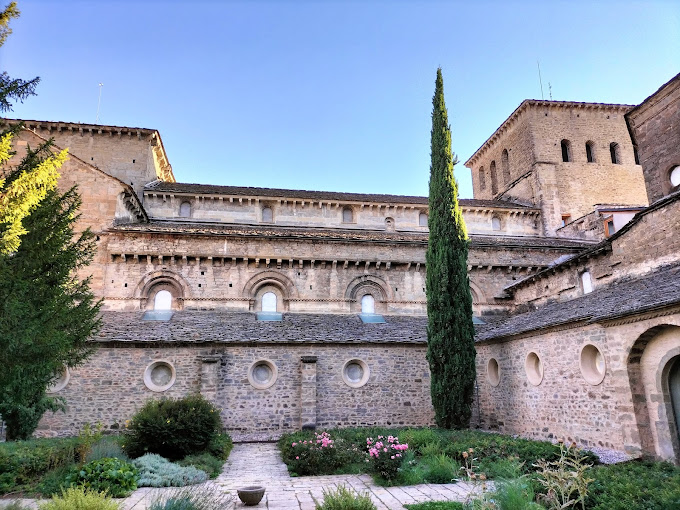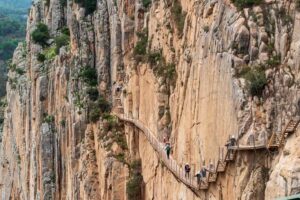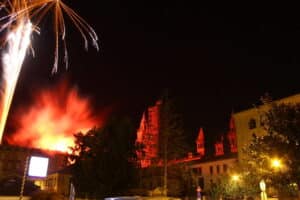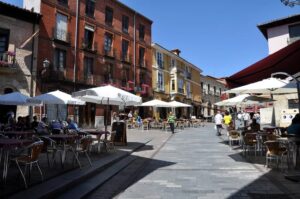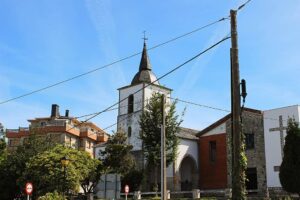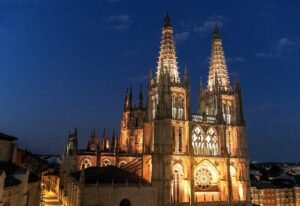The architecture reveals the influence of Romanesque in the French Way. Along the route, a great variety of constructions reflect the splendor that this current of international art had. Without a doubt, it is an enormous cultural legacy.
Other of these places to which many pilgrims go are the following:
- Portico of La Gloria.
- Church of Santa Marina de Sarria.
- Collegiate Church of Santa María del Sar.
- Church of San Nicolás in Portomarín.
There is no doubt that there are many Romanesque works on the Camino Frances that can be seen while walking along it.
Índice de contenidos
Romanesque art
During the XNUMXth and XNUMXth centuries (plus a part of the XNUMXth century), Romanesque art arose. This artistic style was the first to be defined as European and Christian; bringing together the characteristics used in the early Middle Ages.
This created a unique language applicable to later forms of artistic expression. However, not the result of just one region or nationality. This art appeared gradually in France, Italy, Germany and Spain. Thanks to its simultaneous emergence, it has its own peculiarities in each country.
The origins of Romanesque on the French Way were favored by the following factors:
- El pilgrimage growth through the Camino de Santiago.
- El rising economies that allowed the construction of churches and other buildings.
- La religious expansion, which was another inspiration.
Romanesque art is considered doctrinal, a mixture of different currents that reflect values of a new feudal society. Clearly, its roots turn out to be quite deep and give it more value. Since it is a current that brought together the Germanic, the Roman, the Arab and the Byzantine.
We are one of the organizing companies of the Camino de Santiago who are most concerned about the history and evolution of this path. For this reason, we are going to explain the relationship between Romanesque art and the Camino de Santiago.

The relationship between the Romanesque and the Camino de Santiago
The Camino de Santiago has a very large cultural, historical and artistic heritage. As the centuries have passed, the pilgrims who travel along these routes have left their mark. In addition, the Camino Frances is among the most traveled routes in the West.
Therefore, it is more important than other routes that lead to Galicia. Due to its impressive legacy, some movements developed in Europe continue to be printed there: military, civil and religious works. However the Romanesque on the French Way is a leading exponent.
That artistic current flows through different provinces of Spain through that path. As you know, there are several monuments and buildings that show this architectural style. However, for discover strictly Romanesque art, you have to go to the Iberian Peninsula.
Specifically, to the north, since until centuries later that artistic model was promoted to the south. In addition, in the southern zone there is a fusion with other artistic styles, such as Mudejar and Gothic. Depending on the Romanesque impact you want to see, you must go to one area or another.
The Romanesque on the French Camino de Santiago
The French Way is a busy and famous route of the Camino de Santiago thanks to its historical privilege. In that way there are various manifestations of the characteristics with high architectural and artistic value. Therefore, pilgrims have the chance to see countless examples of Romanesque art.
Catalonia is considered the cradle of the initial models of Romanesque art in Spain. But, that artistic current was progressively expanding in the peninsula and reached more eastern areas.
The popular Camino Frances has several examples of the style described throughout the different stages. Therefore, it is an easy influence to perceive in the constructions from Aragon to Galicia. as well as in the Camino de Santiago de Compostela from Sarria.
Aragon
The point of Aragon on the French Way begins in the north of the peninsula, specifically in the Pyrenees. It goes through different stages among which it is impossible not to highlight maximum exponents of Romanesque art. Some of the Romanesque monuments on the French Way that stand out among the provinces are:
- Monastery of San Juan de la Peña.
- Jaca Cathedral.
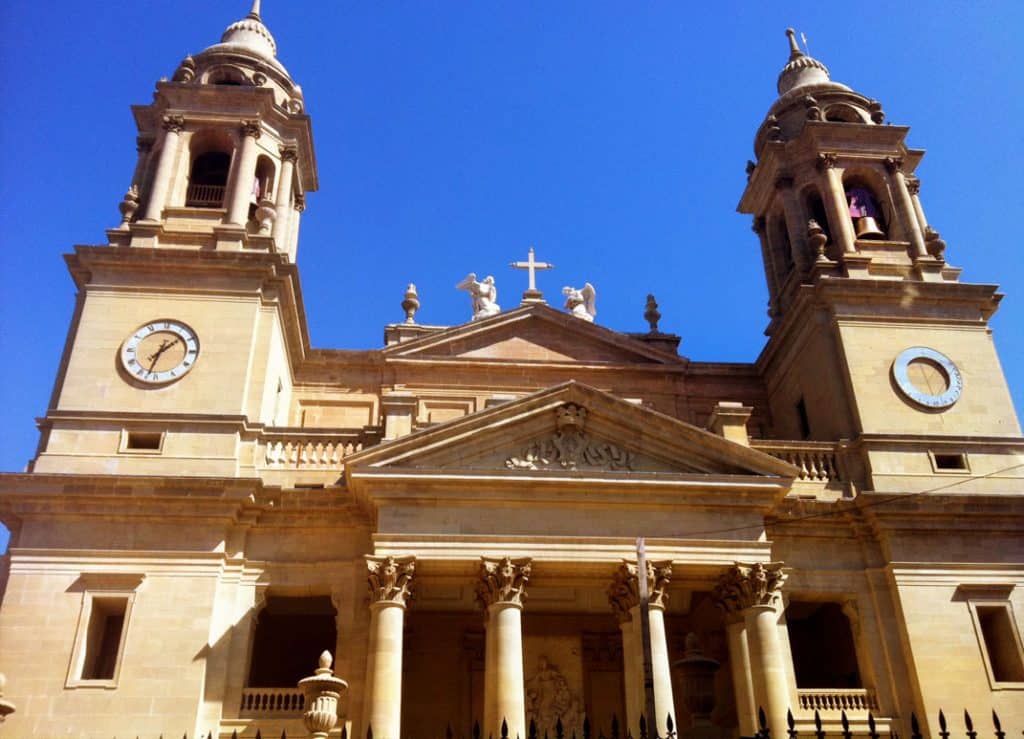
Navarre
The Romanesque on the French Way is also present in Navarra. In the seven stages of that path there are various representatives of the artistic movement.
Among them are the Puente de la Reina, the Palace of the Kings and the Torres del Río. Other than those, there are the ones listed below:
- Church of the Holy Sepulchre.
- Pamplona Cathedral.
- Church of Santa Maria de Eunate.
- Our Lady of Rocamador.
- Church of San Pedro de la Rúa.
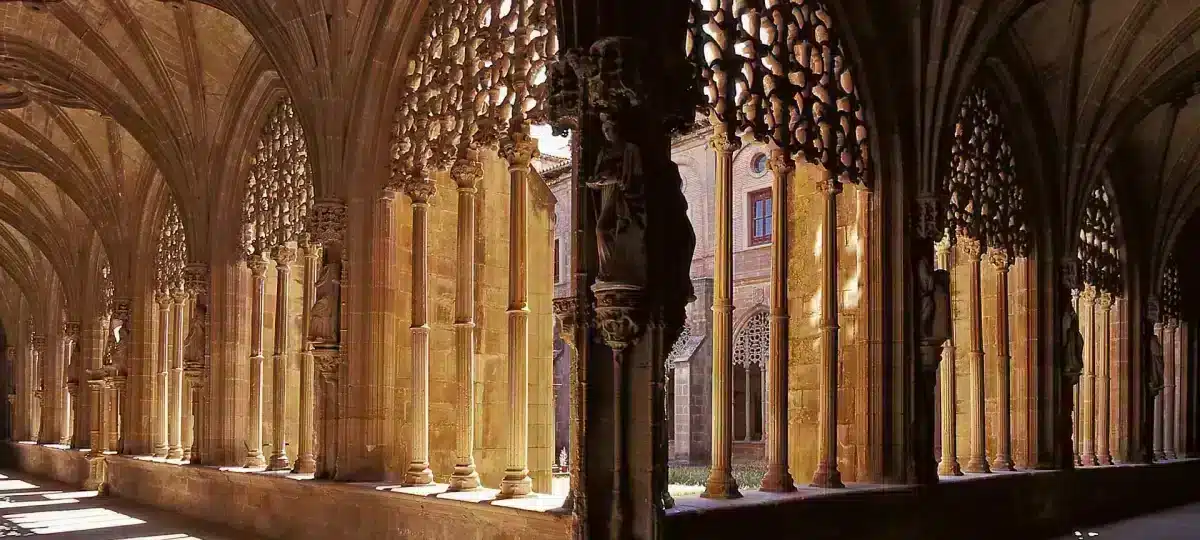
The Rioja
By following the Camino Frances you arrive at La Rioja. In that Autonomous Community it is also easy to find architecture that is a reflection of Romanesque art.
Of course, there are exponents who reign over others for representing the artistic trend in question more clearly. The list below mentions what they are:
- Church of San Bartolomé.
- Cathedral of Santo Domingo de la Calzada.
- Monastery of Santa María la Real de Nájera.

Castilla y Leon
Castilla y León is close to the north of Portugal. This Autonomous Community is among the most important, because here the road intersects with the Camino de la Plata or Vía de la Plata. Besides, It has valuable works of Romanesque art, such as those listed below:
- Basilica of San Isidoro.
- Monastery of San Juan de Ortega.
- Church of San Martín de Tours.
- Huelgas Reales Monastery.

Galicia
The perfect example of Romanesque art on the French Way is in Galicia: the Cathedral of Santiago de Compostela. In fact, that is the destination that pilgrims intend to reach after walking a long journey.
This is on the list of cathedrals that are considered beautifully imposing, due to their architectural design. However, it is not the only point of interest in Galicia that is related to the famous Romanesque style.

